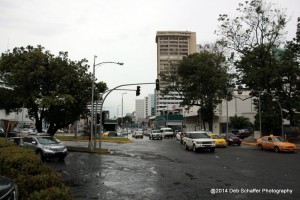We have just returned from a ten-day trip to Panama. We had been eyeing a golf resort near the beaches of this Central American country and finally decided to book the resort and travel there. The planning for this trip was a bit different than others we’ve taken because we knew we were going somewhere that didn’t have a great tourist infrastructure. Our first step in planning this trip was to book the resort and our transportation.

After we booked our resort stay through our timeshare company, we started investigating transportation needs as well as potential side trips and excursions. Although it’s possible to take a shuttle to the resort near Coronado, about an hour’s drive from Panama City along the Pan-American Highway, we decided we would rent a car and drive ourselves. We wanted to have the freedom of moving around the area without relying on public transportation or taxis. We’ve never rented a car in a foreign country before, nor have either of us driven outside the U.S. and Canada. We were assured the car would have a GPS system when the reservation was made.
Since we were getting into Panama City after dark, we decided to taxi into the city, and rent a car near downtown instead of at the airport. Rumor had it that traffic in Panama City is awful, and it didn’t seem like a good idea to drive at night in a strange, foreign city. This turned out to be a very good idea, and we’d do it again. We were prepared with maps of the area, and had the concierge at the hotel call the rental car agency to get the address.
Getting around Panama City is not an easy task for an outsider. The roads are jammed with many more cars than is reasonable, and there are very few street signs. It is not unusual for taxis to go the wrong way down the street. Traffic signals are grudgingly adhered to, usually. Stop signs are only suggestions. The roads in the city are decent, but unexpected potholes loom. We took all this in on a walk after breakfast, going from our hotel and finding the rental car office a few blocks away. In fact, after checking out of our hotel, and getting a cab back to the rental car office, we found it would have been faster to walk to the office than take the cab.

In any case, we made it to the office and handled the transaction. Unfortunately, they do not offer GPS systems in their cars – contradicting the information I had received from the customer service agent I had talked with earlier. Since there were few street signs anyway, how well would a GPS system work? We were undeterred, took the LDW insurance, and after waiting about an hour for the car to arrive from the staging area a few miles away we headed out of the city. The rental agent did create a Google Map for us from the rental car office to Coronado – in Spanish of course.
Panama City is not a large city by our standards, and we managed to get to the right road, get over the Bridge of the Americas and on our way to Coronado. Once out of the city, we did fine – although we took a detour we didn’t mean to take through a town that really wasn’t that interesting. But in about 1 1/2 hours, we were at our resort and checking in.
We’ve learned a lot from this experience. It’s great to be able to control where and when you explore an area by car. In Panama, there are many cars, but not much parking. On a trip to Farallon, we would have stopped and spent time on the beach, but there was nowhere to park the car. Driving is much slower there, mostly because the roads are not great, narrow, and often don’t have shoulders. You’ve got to “go local” and drive like they do or you’ll never get anywhere.
We took the Collision Damage Waiver insurance, something we’ve actually never done before. Our car insurance doesn’t cover us outside the U.S. or Canada, and although we could have covered the LDW under our credit card, we decided to just take the rental company insurance. The car was not damaged while we had it, but the roads were not great and an unnoticed pothole could have done major damage. In fact, when we returned the car, the agent didn’t really even look at it.
This is the first in a series of articles on our trip to Panama. Stay tuned for the next installment!